Dishwashing Machines
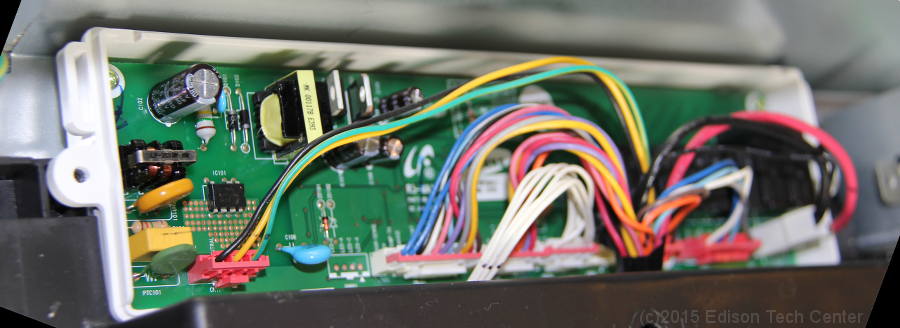
Engineers have improved our standard of living, and dishwashers are one of several important home appliances developed by mechanical and electrical engineers.
1. How it Washes
2. Understanding the parts, photos of parts
3. History
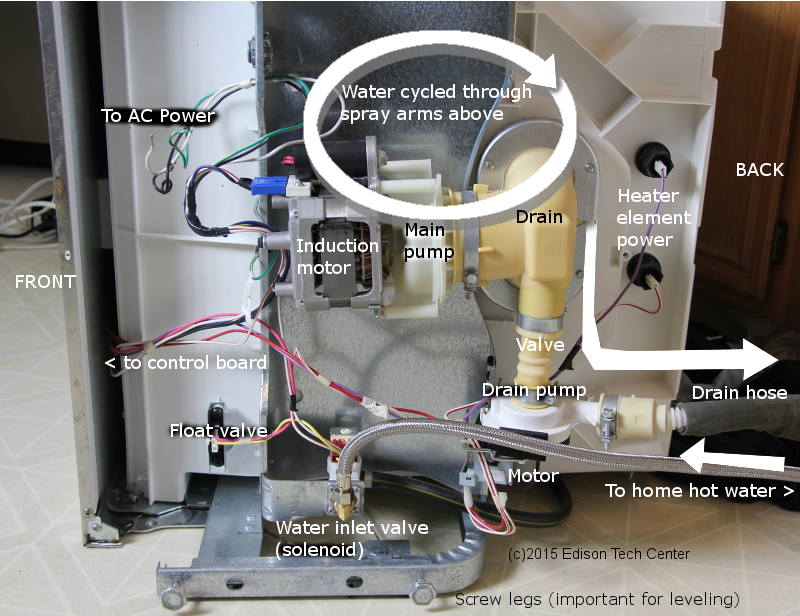
Above: diagram: underneath a standard low cost dishwasher
1.) How it Washes
These are the cycles used to clean the dishes in most dishwashers, these cycles may vary depending on the model:
 |
|
High-end dishwashers:
There are MANY kinds of dishwashers besides the standard home model described above. Professional
commercial dishwashers are really amazing pieces of machinery, some of which can wash dishes very quickly (1-3 minutes).
Professional models can work well and fast but are often very noisy, require good water pressure,
consume a lot of power,
and require a power hood for the steam.
High-end consumer dishwashers for the home may have an inline water heater. This heater, which functions similar to a tankless hot water heater heats the water as it is pumped through to insure that the water is always hot. Some buildings may not give hot enough water so this is a good solution for people living with that problem.
2.) Understanding the Parts
Electric Parts of the dishwasher:
Electric Motors - used to operate water pumps. Learn more about motors >
Float switch - when the dishwasher first fills with water this switch activates when the water
reaches a certain level, the control board than stops incoming water.
Solenoid - in plumbing related applications the word solenoid refers to a switch for
water which is electromagnetically controlled. When power is present it is held open, when
the power is switched off it closes, blocking incoming water. The solenoid is part of the "Water
Inlet Valve".
Heating Element - a calrod used to dry the dishes.
It uses 300-950 Watts depending on the model. Learn more about heating elements >
Control Computer (Control Board) - the brain of the appliance. Learn more about control engineering >
Power Supply - conditions incoming grid voltage using transformers to desired levels for motors, computer and calrod.
Learn more about transformers >
Below: induction motor (120V) with pump, this is the main pump.
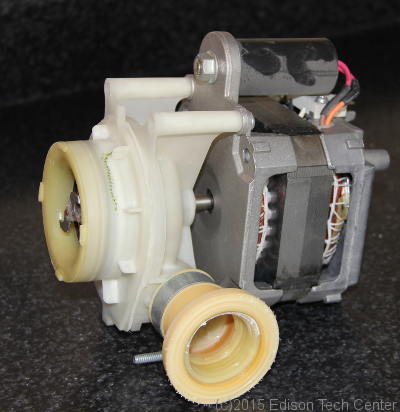 |
Below: drain pump with copper coils exposed
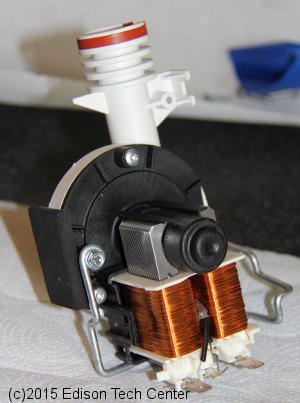 |

Below: diagram of the latest mid-cost Samsung dishwasher. A stainless steel tub may indicate use of higher temperatures which can wash the dishes better, this can also melt your plasticware.
Below: new calrod located inside drain assembly under
the spray arm.
 |
Below: lower spray arm
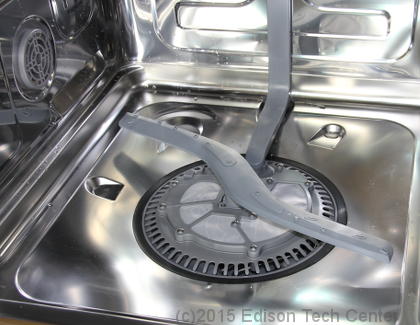 |
Below: plastic clear side chamber in a newer dishwasher, blockages can be seen more easily.
 |
Below: not every dishwasher looks the same underneith, some are more difficult to work on
than others.
 |
3.) History
1886 - Josephine Cochrane develops the first effective dishwasher
1924 - The first modern dishwasher was invented by William Livens, it did not have the drying calrod.
1940 - The calrod was added to the dishwasher to assist in drying
1970s - Dishwashers become wide-spread in the US and Western Europe
2000s - 75% of homes in the US have dishwashers, penetration in some other markets is limited by
low labor costs for hired help.
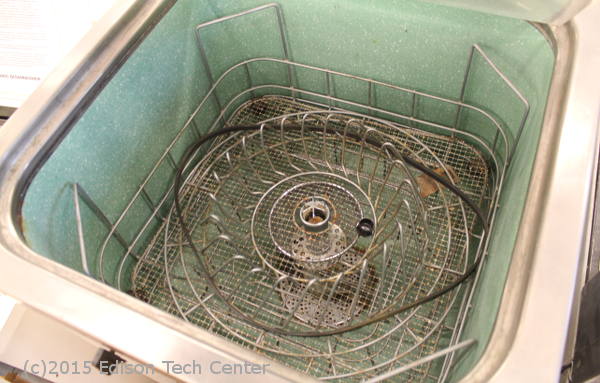
Related Topics:
|
Electric Motors |
The Microwave Oven |
Air Conditioning |
Clothes Washing Machines |
The Fan |
More Stuff |
Article by M.W.
Sources:
GE Appliances
Calrod by Hotpoint. Film. 1928
The Secret History of the Dishwasher. The Independent. 2010
Fixya.com
Sears
Photos:
Edison Tech Center
For use of Edison Tech Center images and videos see our licensing agreement.

